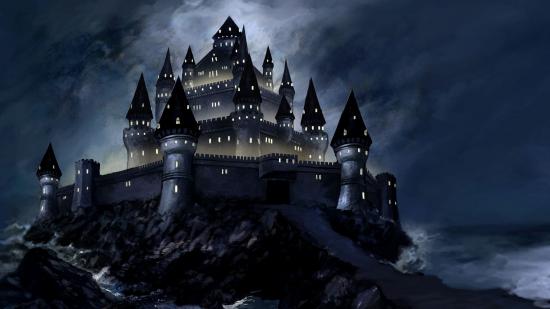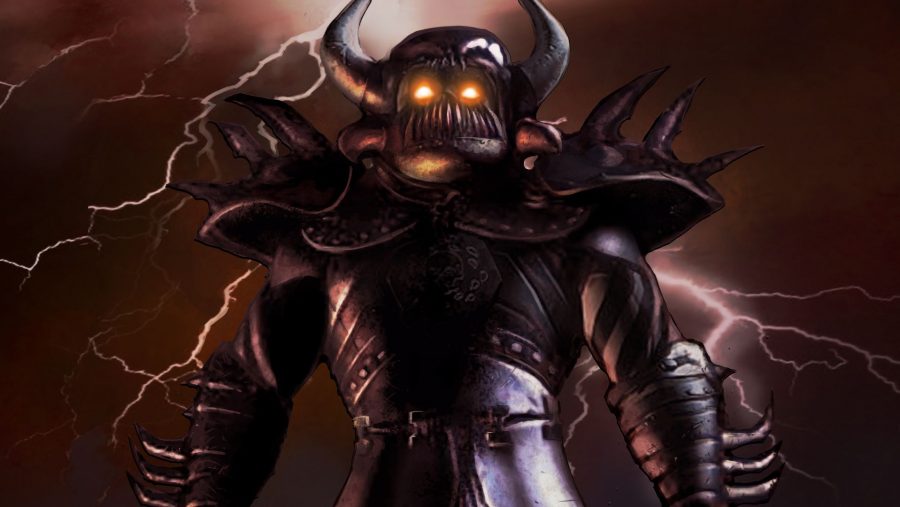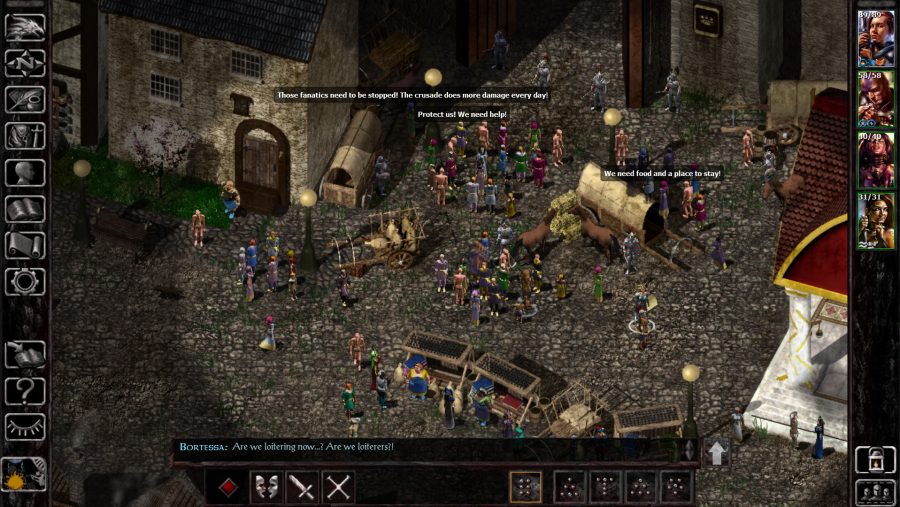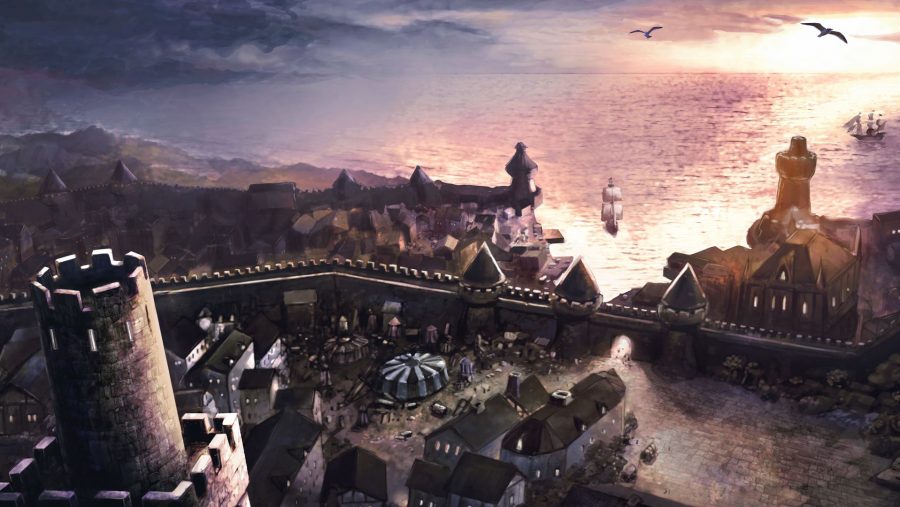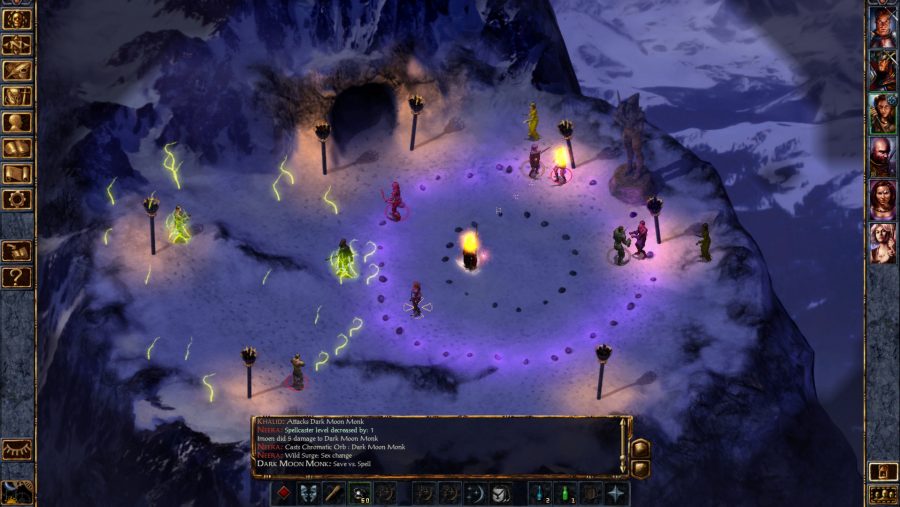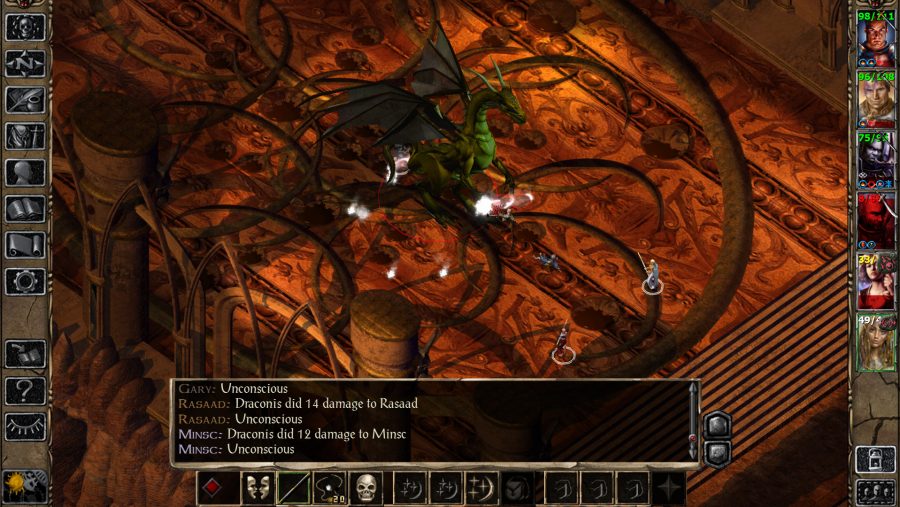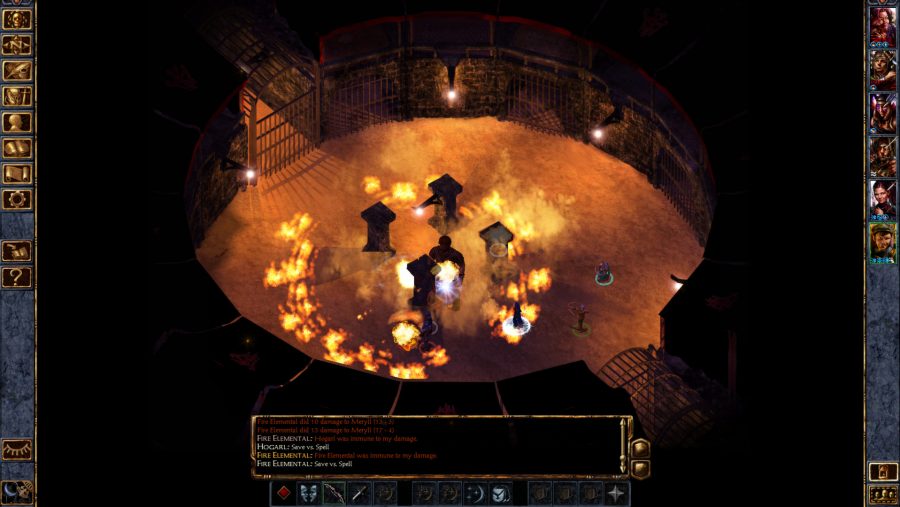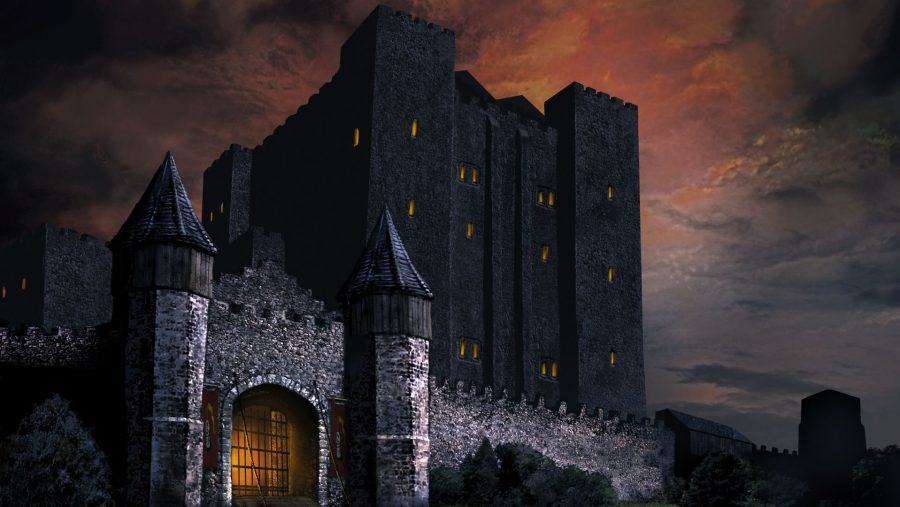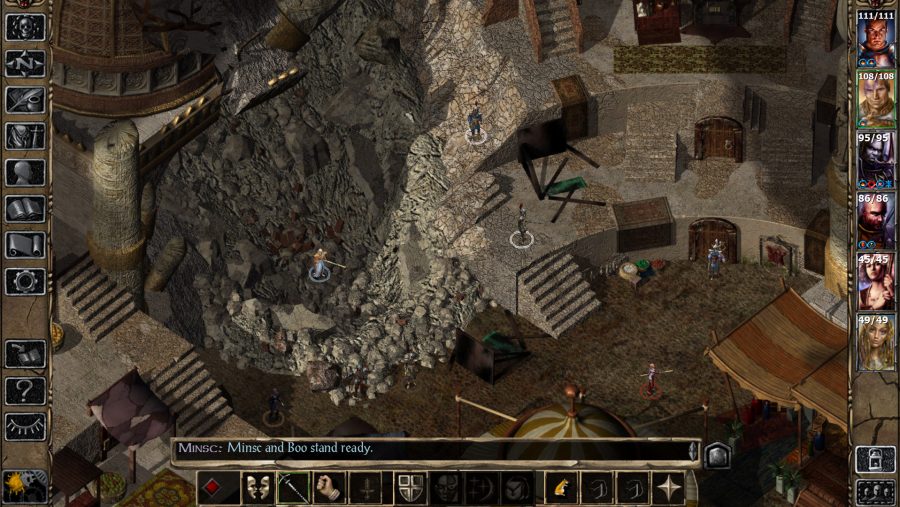Much has been made of Chris Avellone’s way with a companion character; his ability to squeeze philosophy into a dialogue box. But to my mind, too few have been able to appreciate his writing in another medium. Which is to say: Chris Avellone writes an absolutely lovely email.
An Avellone email is concise yet courteous. It respects your time and manages expectations about replies to your questions. It is humble to a frankly absurd degree.
“Thanks for thinking of me,” one reads, as if he wasn’t the most celebrated RPG writer in the industry. “I’ll try to do you proud with the answers.” The answers in question were for an article about a possible Baldur’s Gate 3 that brought together the thoughts of a few key Black Isle alumni. Avellone’s response offered a fascinating insight into the studio at the time, as well as his tenure at Obsidian, and we didn’t much like the idea of losing any of it.
To that end, the whole thing is published here. After all – since when did Chris Avellone cut back on dialogue?
PCGN: How would you describe your own relationship with Baldur’s Gate?
Chris Avellone: First, I’d describe it as respect and gratitude. Not only for the game itself, but the tech, which saved the studio I was working for at the time – Black Isle Studios, the RPG-focused subdivision of Interplay.
To explain, Baldur’s Gate and the tech/code base that supported the game (the Infinity Engine) saved Black Isle Studios and kept Interplay a few more years away from collapse. For me, I’ve always considered Baldur’s Gate and BioWare’s Infinity Engine as the reason we kept Black Isle running as long as we did. Since we didn’t have an internal game engine at the studio to use for our own products, unfortunately, we had to rely on other studio’s tech to create our titles (including D&D), and the Infinity Engine was one such engine. It allowed us to make Planescape: Torment and the Icewind Dale series (all two and 1/3 installments), so I’m thankful for that.
The other description I’d carry over is that, at the time, the idea of a new line of D&D games using updated graphics really gripped RPG fans. The last crop of D&D titles had been SSI’s Gold Box series – Pool of Radiance, etc. There had been a pause of a few years, then suddenly screenshots appeared of Baldur’s Gate that suddenly seemed to promise a return to that nostalgic gaming experience. Not only did it get RPG fans hyped, it did one better and delivered on its promise.
What might be strange to people looking in at Black Isle Studios is, aside from Fallout, few of Black Isle’s other titles seemed to gain enough traction to see the light of day, and if they did, they didn’t enjoy nearly the same recognition and success as Baldur’s Gate – although BioWare definitely and deservedly did. This list of titles included Lionheart (which shipped, but was being done by an outside studio), Stonekeep 2 (which never shipped), Fallout: Van Buren (which never shipped, and barely had a staff for many years), Baldur’s Gate 3 (which never shipped), Planescape: Torment (which didn’t sell well), TORN (which never shipped), and even the ever-increasingly-straining-to-hold-together-at-the-seams Icewind Dale games.
Icewind Dale sold well enough, but shot for a target audience that were willing to accept a lesser version of Baldur’s Gate if they couldn’t actually get another Baldur’s Gate – BioWare had left Interplay and Black Isle a while before. All of these titles were a reminder that we never seemed able to get on our feet to develop a strong title or engine of our own.
Even when we had the chance to do an action console version of Baldur’s Gate (Dark Alliance), we had to do it in coordination with another studio (Snowblind) who had the technical expertise and design expertise to make the game. I was privileged to have a chance to work on it, and even after I left Black Isle, Snowblind asked if I’d keep working with them, as we’d had a good working relationship, even if things with Interplay and Black Isle had become strained.
So in the end, Baldur’s Gate was a reminder that maybe we could have done something more – and to watch it sailing into the sunset was a definite turning point that marked Black Isle’s descent into an Icewind Dale-style grave. Interplay kept requesting we turn out Icewind Dale-style games faster and faster to try and keep the company’s head above water, but eventually, that wasn’t enough.
What was the RPG landscape like before Baldur’s Gate and after?
It was a bit of a wasteland. No pun to the Wasteland franchise, which Interplay was unable to do, so we did Fallout as a spiritual successor inside the studio – more on that later.
The market was lacking a strong run of RPGs, so the time was ripe if RPGs appeared on the market – and Baldur’s Gate and Fallout both came out of the gate strong. Not only were both good games – Baldur’s Gate sold much more than Fallout, but Fallout defied expectations when it was released as well – but they filled a hole in the RPG market that people had wanted.
After that, things seemed to be looking up – Baldur’s Gate, Tales of the Sword Coast, Baldur’s Gate 2, Fallout 1 (which wasn’t developed by Black Isle), then Fallout 2 (which was developed by Black Isle, but we had to keep working on it after the original directors left to go form Troika, which gave us Arcanum, Temple of Elemental Evil, Vampire: Bloodlines, and more).
Did you ever get close to working on a Baldur’s Gate sequel yourself?
Yes. I worked on Baldur’s Gate 3 [also known as The Black Hound], but it didn’t share much in common with the original franchise, so even though I was working on it, it was difficult to get as excited about it as the Baldur’s Gate franchise itself.
I was worried its disconnect in terms of story, antagonist, premise, companions, gameplay, and even priorities were all different than Baldur’s Gate itself. And I was worried it would also be off-putting to players expecting a return to the original series.
In the end, when Baldur’s Gate 3 got cancelled, I felt bad for the amount of work that was put into it. It had some gorgeous art and some great level design. But I didn’t mourn the loss of the engine, and I didn’t mourn the loss of the design content, narrative and otherwise. I didn’t think it would have measured up to what made the original Baldur’s Gate special, unfortunately – Black Isle just didn’t have the same focus BioWare did, or the same heart for the series.
Not long after Baldur’s Gate 3 got cancelled – due to a supposed accounting error, which caused the studio to lose the D&D license – I resigned. It felt as if any more work we did on RPGs had the same chance of getting cancelled, no matter how hard we worked on it.
It was especially difficult to resign, as Baldur’s Gate 3’s loss meant we could switch gears and finally have a team working on Fallout: Van Buren (Black Isle’s Fallout 3), and I had spent years putting together the design for it. But I felt that what happened to Baldur’s Gate 3 would happen to Fallout: Van Buren, and within a year after my departure (right before Christmas), Interplay cancelled Van Buren as well. I felt bad for the team, but at the same time, the writing had been on the wall for some time.
Why do you think people still care about the idea of a Baldur’s Gate 3?
I think because RPG fans loved the first two games, and a trilogy always sits better with folks if done well. I do think people imagine a perfect BG3, and that’s a tough thing for anyone to deliver on. Even with BioWare being fragmented, it’d be hard pressed to do it, even if it wanted to.
There have been a lot of games that have tried to capitalise on the Baldur’s Gate nostalgia, including games I worked on at Obsidian, but I think they would have been better off finding their own voice or finding a new hook in a new fantasy world that would inspire a distinct approach.
Is there something special about Baldur’s Gate that its spiritual successors haven’t captured yet?
The charm of the companions, for starters. One challenge I came back to after Pillars of Eternity (and I admit, I wrote two companions) is that a lot of the companions had lost a sense of charm that the original Baldur’s Gate cast had. It hit me when I got involved with the Enhanced Editions, because they reminded me of the companion design of the original game and made me realise that following a formula had taken Obsidian largely off the beaten path. I say Pillars 1, as I didn’t play Pillars 2, but the Pillars 1 companions with the possible exception of Eder just didn’t carry the same punch as the Baldur’s Gate crew. The Baldur’s Gate crew felt like your friends, rivals, and even your conscience at times, but none of the Pillars companions had that charm about them. Again, I felt partly to blame for that.
Even today, few teams have the resources to make a Baldur’s Gate. It required a lot of developers, a lot of QA, and a lot of support beyond BioWare in terms of audio, VO, and some production. In addition, because the work was being done in Edmonton, BioWare was able to hire a much larger team than any American team for a fraction of the cost, and if they had a problem, they could hire developers to brute force solutions where companies living in higher-cost-of-living sections of the world could not. The Kickstarter (and Fig) funds to make Pillars 1 and 2, for example, weren’t enough to cover the costs, and the lack of QA on Pillars 2 definitely hurt it on release.
It could have used a few more months of testing. It was critically well-received, which is great for the team, but upper management could have pushed to let it cook longer before shipping it – especially since they were in charge of the release schedule for the first time in a long time, now that they were free of an official publisher.
Lastly, the developers who worked on Baldur’s Gate loved D&D. They played it, embraced it, and I think part of the charm of Baldur’s Gate was that they let the characters they had played in their own campaigns appear and be part of the story in Baldur’s Gate. Because they had had a chance to play those characters for many years, it gave them an established look and feel, a sense of history, and a sense of actually being those characters and knowing their relationships with others in the party.
All of that gave the spine of the computer game a strong backbone that had been born out of the tabletop RPGs BioWare had played. I think it’s a great methodology for developing a world if you have time for it, and the great thing about Baldur’s Gate is that they’d done all this work before they ever started. It was part of their gaming history.
As a side note, this aspect was one of the things that drew me to the Pathfinder: Kingmaker project as well. Aside from the fact I loved Pathfinder, I noticed Owlcat Studios had played a lot of Pathfinder pen-and-paper before they had a chance to make the game – the devs had run the campaign module series among themselves several times, which showed a genuine love for the Kingmaker modules and the world. Even better, it allowed them to take material they’d personally crafted for the game as GMs and players, and incorporate it into the computer RPG, just like BioWare did.
The only chance I’ve ever had to do something similar was Fallout: Van Buren – I was fortunate enough to have the chance to GM Fallout: Van Buren back at Black Isle, even though there were barely any team members assigned to the project. Running pen-and-paper games after work is a great way to flesh out the world, the lore, and the mechanics when all you have is yourself to fall back on as game designer and worldbuilder.
Do you think there are still stories worth telling under the Baldur’s Gate name?
Absolutely. Baldur’s Gate and the Forgotten Realms are a big place, and not just the world, but encompassing many dimensions as well. If there’s anything I learned from Neverwinter Nights 2: Mask of the Betrayer, it’s that there’s plenty of great story material in almost every region of the Realms if the designer takes the opportunity to explore it.
The challenge sometimes becomes (and I felt this way when Bethesda did Fallout 3) that there is a very real fear that you need to ‘re-introduce’ the campaign setting to a new generation of players if the series has been silent too long. This fear often felt like the reason that developers went back to the more ‘classical’ parts of the Forgotten Realms for their first foray back into the D&D space. It was felt that the Sword Coast would be more accessible to the audience, despite the fact that the Forgotten Realms has a wide range of places to really sink your teeth into.
Let’s say, hypothetically, you were given the reins – where would you take it?
While Baldur’s Gate itself would be part of the game, I’d want to do what’s described above and make sure to take the journey along multiple paths throughout the Realms, to places new to the player (and perhaps a few familiar ones). I’d want to keep the isometric feel rather than go Skyrim-style, at least for the first installment, only because I think there was an incredible amount of beauty in the isometric view of Baldur’s Gate and Icewind Dale. In some locations, it was like you were travelling across a painting, and it made exploring the locations even cooler because they weren’t generic tiles slapped down in new formations.
I’d also want to see if any of the ex-BioWare designers and writers would want to come along for the ride, especially if they’d left BioWare and still were interested in working in D&D again. Even if they were otherwise engaged, I think being able to speak to them in-depth about the original series and get their personal takes on the setting would be helpful for Baldur’s Gate 3’s development.
